Istria is the Croatian region with the highest number of wrecks. This is mainly due to the large number of ships sunk by mines during World Wars I and II. Indeed, just a short distance from the port of Pula, there were 5 minefields with a total of 1450 mines.
Some of these wrecks have a very dramatic history, such as the Baron Gautsch, which was carrying civilians when it hit a mine, or the hospital ship Tübingen, which was attacked despite international laws forbidding it. Getting to know wrecks also gives you an insight into certain parts of history that are less well-known. When scuba diving, you can also admire a wonderful variety of fish, because the wrecks in Croatia act as artificial reefs and are therefore home to animals such as echinoderms, crabs, lobsters and even large fish such as tuna.
In this article, I will present the most beautiful wrecks that can be found city by city, starting from the north-west of the region and moving southwards.
By clicking on the icons, each of which corresponds to a wreck, you can find out the name of the wreck, the year in which it sank and its length. The depth at which it is located, is also an information included in the icons description to give you a better idea of the difficulty of the dive and, in most cases, a link allowing you to find the appropriate offer to visit the site.
If you are interested in wreck diving in other regions of Croatia, read our article: Wreck diving in Croatia: The best wrecks to discover.
Shipwreck diving close to Umag and Novigrad
Although not necessarily the first place one might think of when it comes to wreck diving in Istria, the town of Umag, which is close to the Italian border, boasts a seabed that can be very interesting for divers. Here, even divers with moderate skills can admire ancient amphorae at the Savudrija site.
1. Coriolanus: This British navy ship served as a minesweeper and spy ship. It sank in 1945 because of a mine that detonated near the town of Novigrad. The 46 m long wreck rests on the seabed at a maximum depth of 30 m. Over the years, this wreck has been covered with marine flora and has begun to house many fish. Visiting the wreck of the Coriolanus is a stunning experience, not only because of the vastness of the flora and fauna surrounding it, but also because of the cannons that are still visible despite being covered in algae and sponges.
2. Numidia: This wreck, sunk in 1944, attracts the curiosity of many diving enthusiasts due to its impressive length of 120 metres. Diving to this wreck, however, is only possible for experienced divers due to its location and depth.
Shipwreck diving close to Rovinj
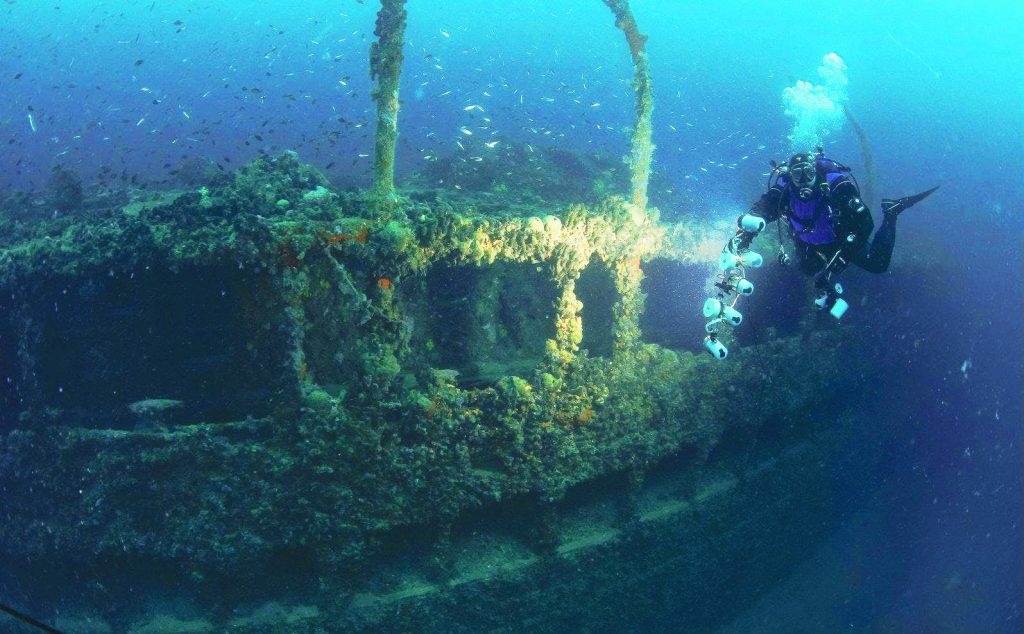
3. Maona: is a small cargo ship that sank in 1942 for unknown reasons near the coast of Rovinj while carrying coal. Similarly to the Coriolanus, a flourishing marine ecosystem has developed around the remains of the ship – a highlight for any scuba diving enthusiast.
4. Giuseppe Dezza TA-35: This Italian naval ship, renamed TA-35 by the German army, was probably sunk by a British aircraft (or after hitting a mine) and broke in two in 1944, not far from the coast of Rovinj. Just under half of the crew of 130 soldiers survived. The 35-metre-long wreck attracts divers interested in military weaponry, such as cannons and other weapons which are still clearly visible.

5. Baron Gautsch: This ship carrying civilians from Kotor to Trieste sank because of a mine laid by their own army. Based on subsequent investigations, it is suspected that the accident was caused by the negligence of the person who was steering the boat. Having entered the minefield by mistake, the boat did not react to the warning signals sent to it and eventually hit a KGB mine. The accident caused many casualties. Today, the most interesting feature of this wreck is the possibility to admire its interior on a scuba diving excursion.
6. Hans Schmidt: This German cargo ship was named after its last owner. It sank and broke in two parts in 1943 between the towns of Rovinj and Pula. The ship Hans Schmidt, also known as Constantinos or Istra, has a remarkable length of 99 m. In addition to its size and the fact that it is inhabited by many interesting marine animals, the wreck boasts some impressive weaponry, which attracts many diving enthusiasts to this part of the Adriatic Sea.
Shipwreck diving close to Pula
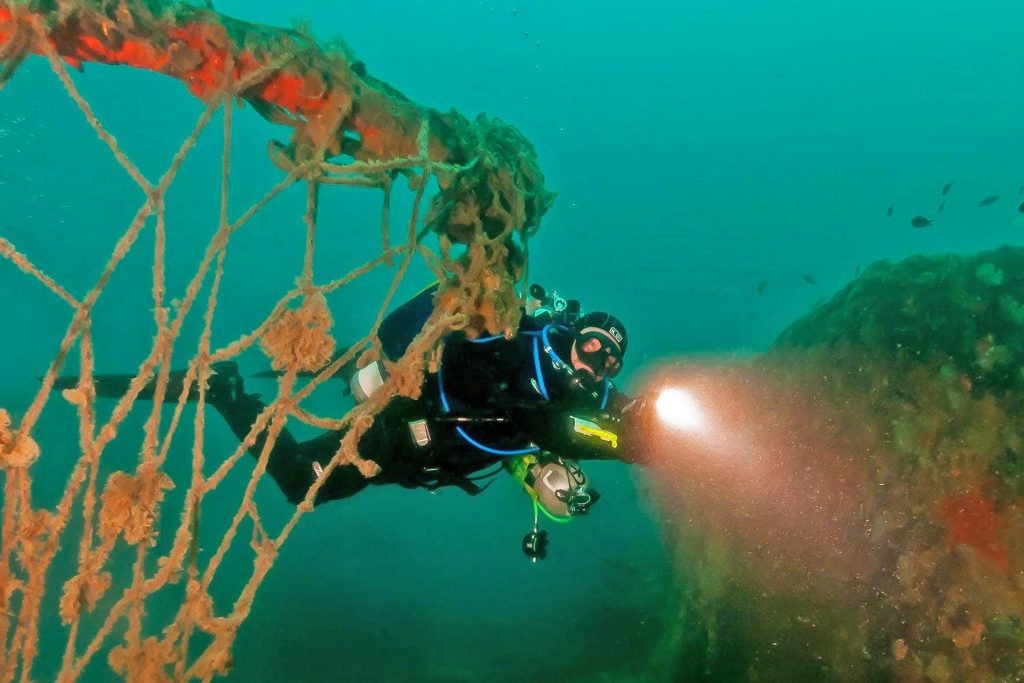
Pula is certainly the town in Istria with the most wrecks off its coast. Numerous diving centres can be found here and many centres in nearby towns such as Rovinj or Medulin make the trip to these wrecks.
7. Medusa: Although it is believed that the remains of this submarine belonged to the Italian submarine Medusa, it is not yet clear whether this is true. When the wreck was found in 2002, attempts were made to determine whether it was one of the seven German U-boats that were voluntarily sunk by the army to protect military secrets near the coast of Pula. However, some parts of the wreck, such as its Italian-made engines, led to the conclusion that this was not one of them. Further indications suggested that it was the submarine Medusa. The Medusa was sunk by a British submarine on the 30th of January 1942. This was a great tragedy because it is believed that only two members of the crew managed to survive.
8. Remorker: This ship, which was used for moving large ships within the port, sank in the 1970s. What’s particularly interesting is the large variety of fish that can be seen around this small ship.
9. John Gilmore: Since the real name of this boat is not known, many details of this wreck’s history are still unclear. Supposedly, the ship, which was built in England, sank at the beginning of the First World War. The name John Gilmore was given to it because of the brand of its engines. The most interesting part of a dive to this wreck is the chance to inspect it’s perfectly preserved interior.
10. U-82 boat: This German submarine was sunk by the German army itself at the end of World War II in order to prevent any military secrets from falling into enemy hands. Due to its location, however, diving excursions to this wreck are only recommended for experienced divers.
11. Josefina (Josephina): An Austro-Hungarian merchant ship that was sunk and broken in two by a mine in 1915 while on its way to Trieste. The boat, whose previous names were ‘SS Sultan’ and ‘Deutscher Kaiser’ is covered in red sponges and has fishing nets that can still be seen. Another thing that divers typically appreciate about this wreck is the possibility to enter some parts of the boat and explore its interior.
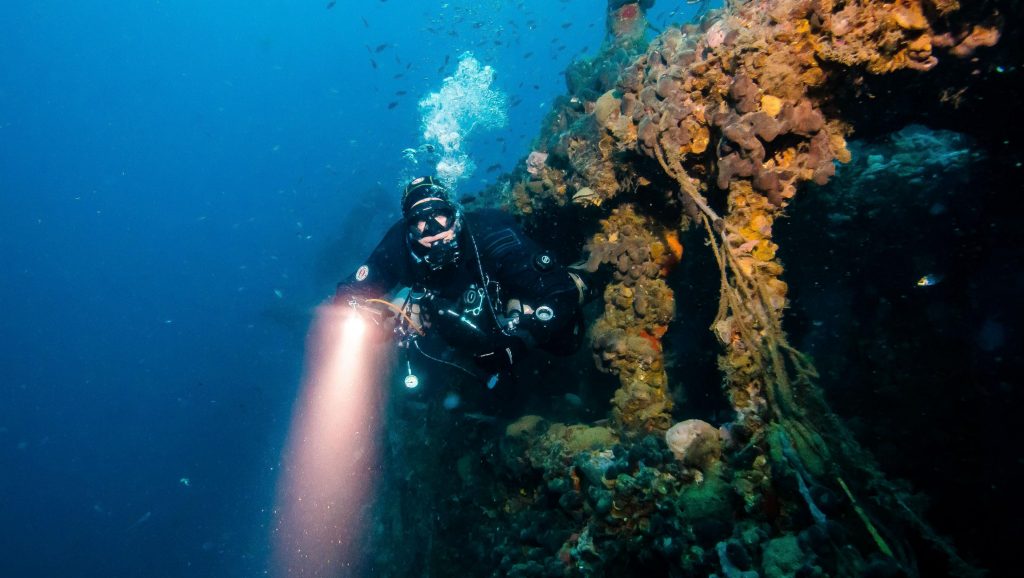
12. Varese (Vareze): An Italian merchant ship sunk and broken in two by a mine in 1915 while seeking refuge in the port of Pula due to bad weather. Despite the sudden intervention of two ships, only one crew member survived the accident. Over the years, a unique marine ecosystem has developed on the metal remains of the ship. Today, sponges and corals can be admired, even though visibility is not very good due to the sandy seabed. Advanced divers can safely admire the interior of the wreck.
13. Golub: This fishing boat was hit very recently (2011) by another boat of Maltese origin. The wooden boat sank. Fortunately all the crew were saved.
Shipwreck diving close to Medulin
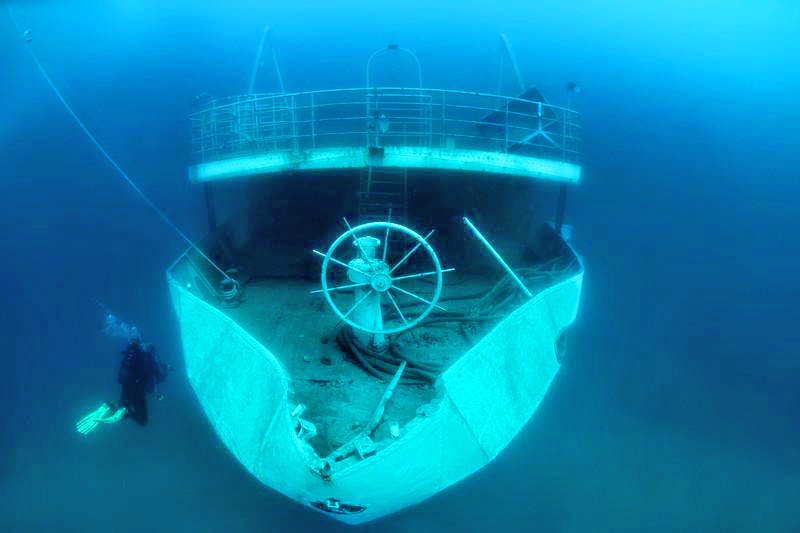
There are also wonderful wreck diving opportunities near the town of Medulin. The German boat Tübingen, for example, is very interesting for history buffs, or the ship Flamingo, which sank when one of its own mines exploded.
14. Draga: This boat sank after being too heavily loaded with sand in the 60s. The peculiarity of this wreck is that it attracts a very large number of fish and is therefore excellent for those who want to combine a wreck dive with the opportunity to see some local marine life.
15. Vis: This military vessel was sunk on the 22nd of May, 2016 with the intention of making it a dive site. Being artificially sunk, it allows visitors to digitally explore what the ship looked like before it was sunk, and then admire the real thing during a scuba dive to this perfectly preserved wreck.
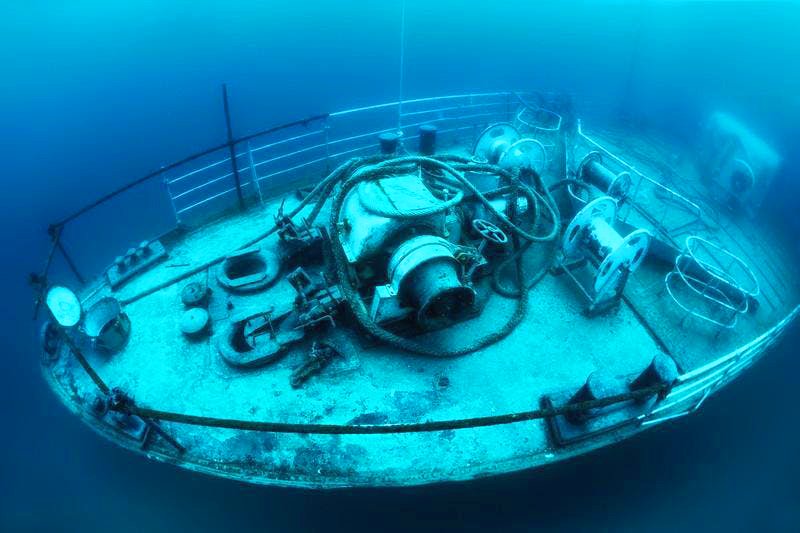
16. Flamingo TB-26: This Austro-Hungarian ship was built in Trieste in 1889. In 1914, it sank after hitting its own mine. The captain managed to send a warning signal and the crew managed to lower a lifeboat into the sea. However, due to the bad weather, the life boat also sank and only 35% of the 17-member crew survived. The captain managed to save himself and was later convicted of being responsible for the accident.
17. Tübingen: The sinking of this ship caused a great stir. The German hospital ship Tübingen was sunk on its way to Saloniko in Greece by two British Beaufighters. What caused a lot of controversy was the well-known fact that attacking hospital transports is forbidden, even in war. The Germans later claimed that they had informed the British of the route the hospital ship carrying wounded Germans would take and that therefore the attack had deliberately violated international law. Many investigations were carried out by both the British and the Germans and, unsurprisingly, the two sides drew two very different conclusions. The British categorised this as an accident, due to the fact that the planes had difficulty recognising the type of boat, and there was miscommunication with the ground forces. The Germans, on the other hand, claimed that the British did recognise that it was a hospital boat, since the attack took place after sunrise, between 7:45 and 8:05 am, and decided to attack anyway. The ship sank at 8:20 am. In the 15 minutes between the end of the attack and the boat sinking, the crew managed to lower the lifeboats into the sea, allowing the passengers and most of the crew to escape. 9 people lost their lives.
18. Stella Polare TA-36 Stella Polare TA-36 was an Italian destroyer that was broken in half by a German mine in 1944. The top of the ship is thus located quite far from the main part of the ship.
19. Luana: This is a merchant ship that hit a mine in 1943. The wreck is well preserved and experienced divers can enter to see the interior.
Shipwreck diving close to Kavran and Ližnjan
Since the port towns in the south-east of Istria are smaller and less exposed to external attacks than Rovinj and especially Pula, it is likely that there were fewer mines in the water and therefore fewer wrecks can be found along this part of the coast. The most famous of these are the Cesare Rossarol and the nearby Minolovac, meaning minesweeper in Croatian. The Minolovac of which little is known,is often visited in combination with the Cesare Rossarol.
20. Cesare Rossarol (Cez 1, Cez 2): The characteristic of this wreck is, besides it being broken into two parts, the fact that the two parts are more than 300 m apart. Indeed, the violent explosion that sank this Italian destroyer, probably also caused a mine to detonate, thereby tearing the boat in two.

Having read this I believed it was very enlightening. I appreciate
you finding the time and energy to put this article together.
I once again find myself spending a lot of time both reading and posting comments.
But so what, it was still worth it!
I’m truly thrilled due to the top quality of this blog post.
It appears that you want this subject matter. Thank you
for discussing.
Great article.
Peculiar article, totally what I was looking for.
Thank you Eugenia, we are pleased that you like our blog.
Hey there, You’ve done an incredible job. I will certainly digg it and personally suggest to my friends.
I am confident they’ll be benefited from this web site.